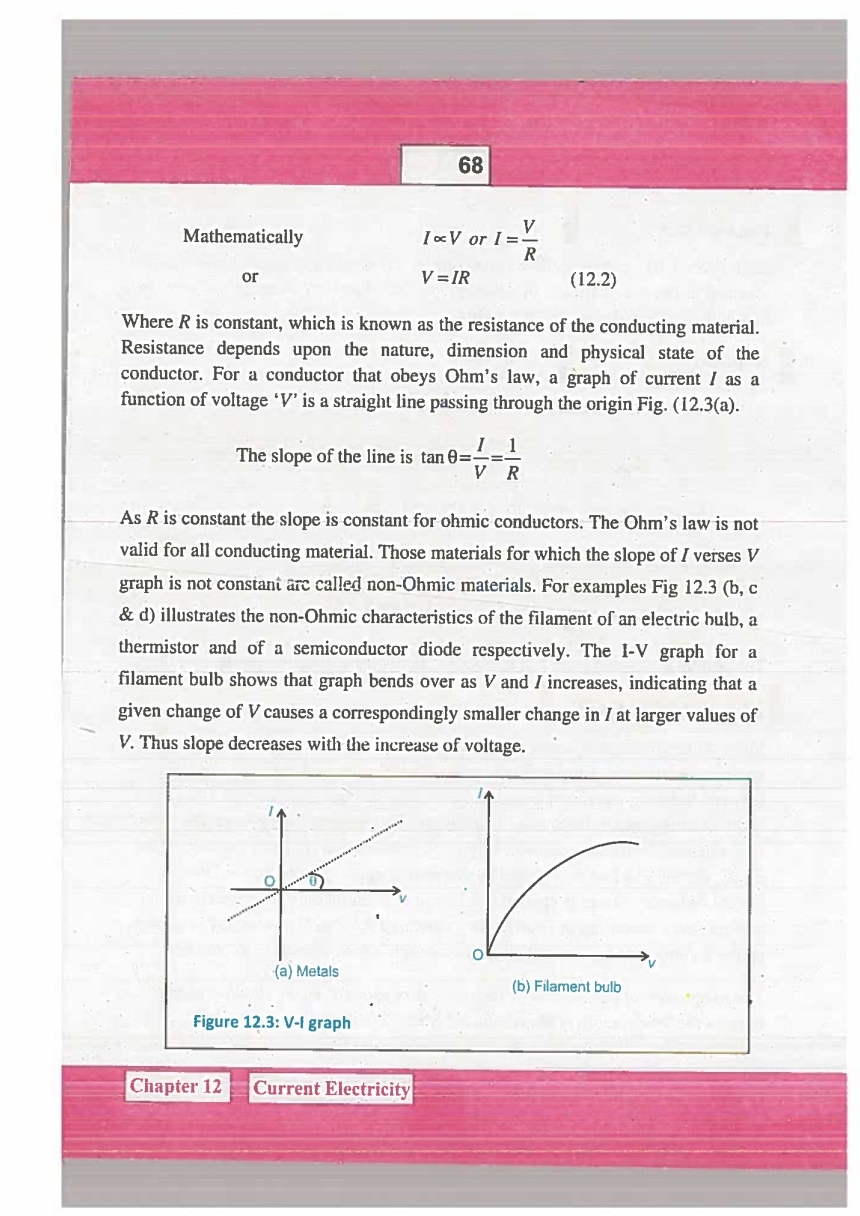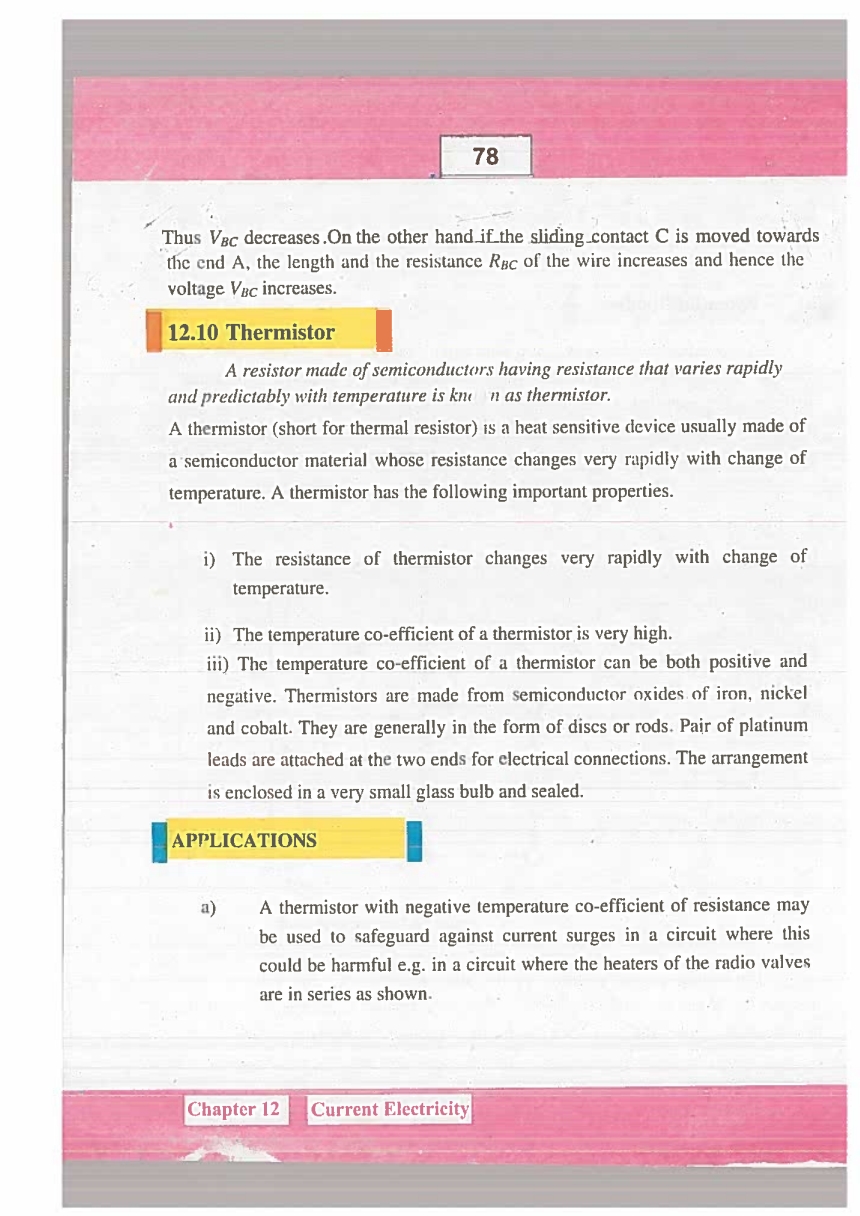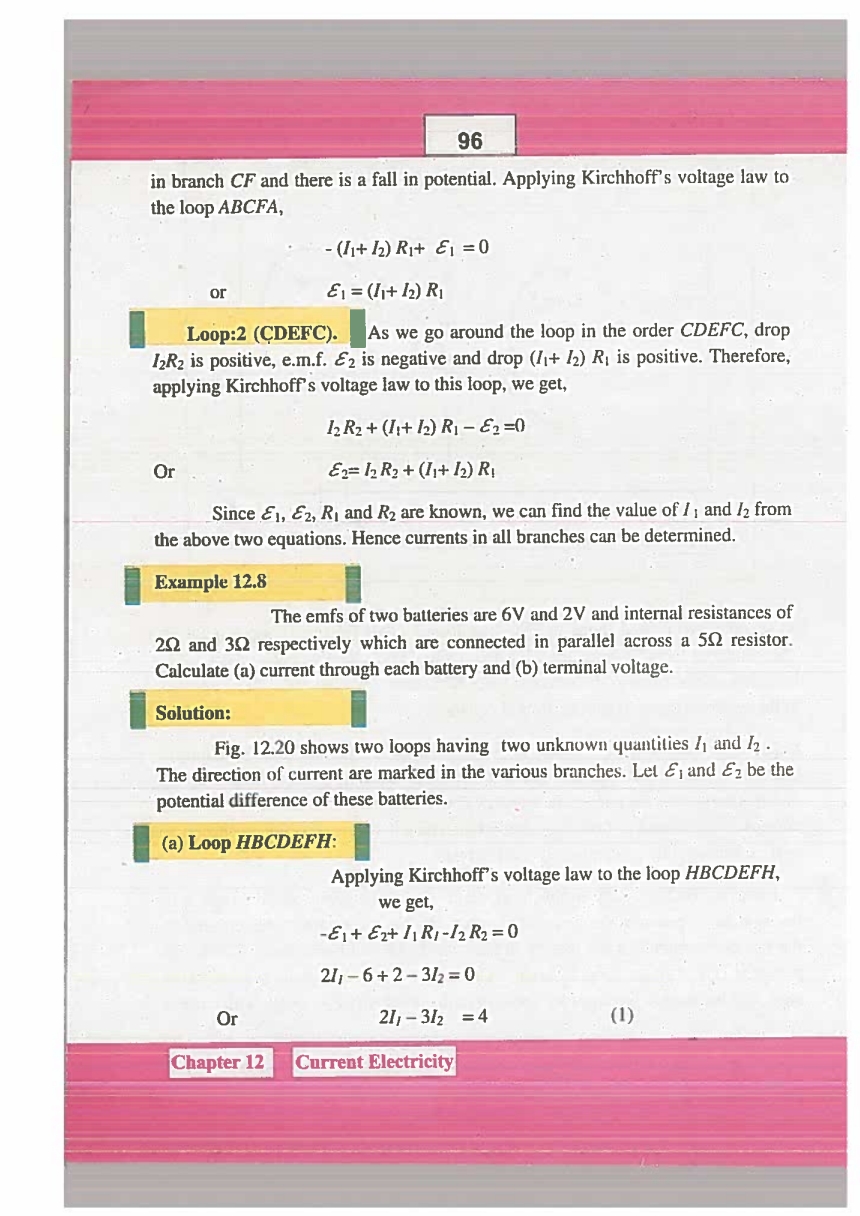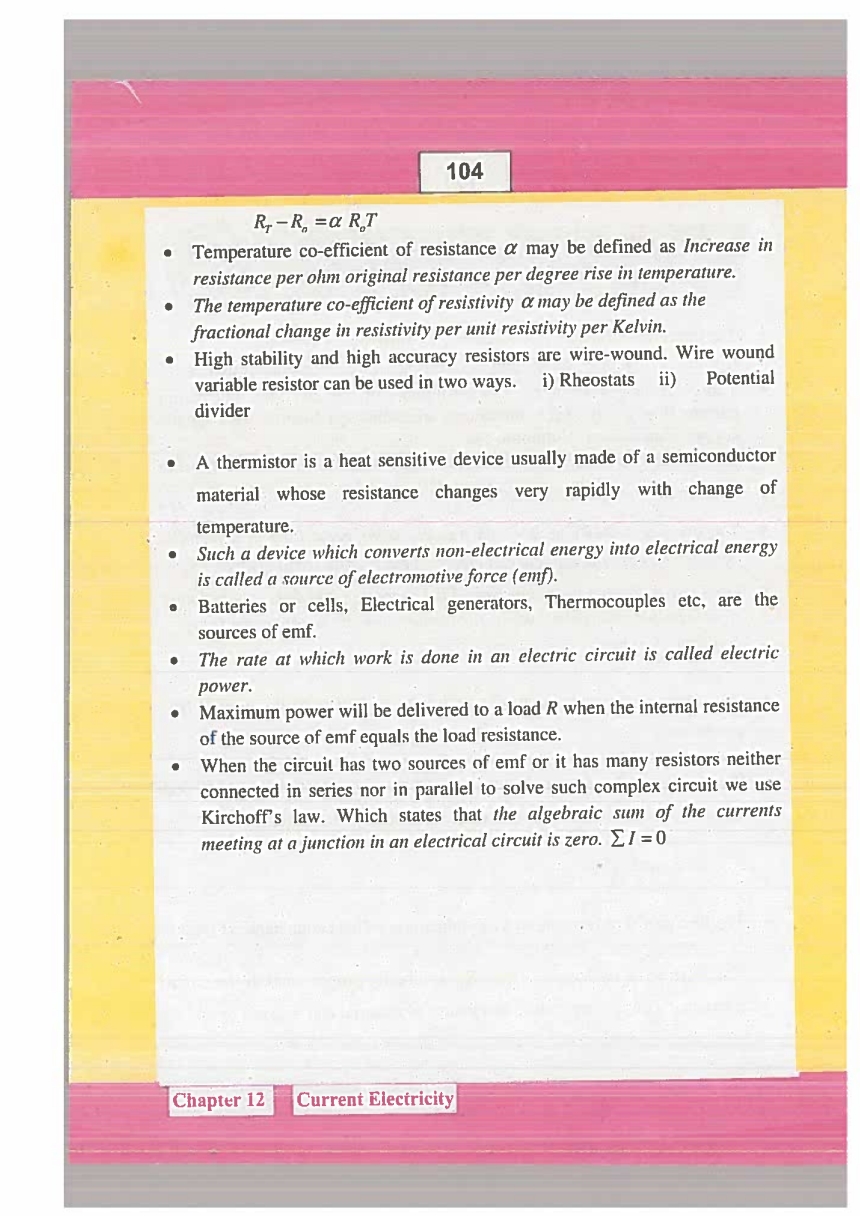After studying this chapter the students will be able to
• describe the concept of steady current. ·
• state Ohm's law.
·• define resistivity and explain its dependence upon temperature.
• define conductance and conductivity of conductor.
• state the characteristics of a thermistor and its use to measure low
temperatures.
• distinguish between e.m.f and p.d. using the energy considerations.
• explain the internal resistance of sources and its consequences for external
circuits.
• describe some sources of e.m.f.
• describe the conditions for maximum power transfer.
• describe thermocouple and its function.
• explain variation of thermoelectric e.m.f. with temperature.
• apply Kirchhoff's first law as conservation of charge to solve problem.
• apply Kirchhoff's second law as conservation of energy to· solve problem.
• describe the working of rheostat in the potential divider circuit.
• describe what is a Wheatstone bridge and how it is used to find unknown
resistance.
• describe the function of potentiometer to measure and compare potentials
without drawing any current from the circuit.
Current electricity is the study of charges in motion. Simple electrical circuits
can be solved by applying Ohm's law. For other circuits, Kirchhoff rules are
applied.
I

















































Post a Comment